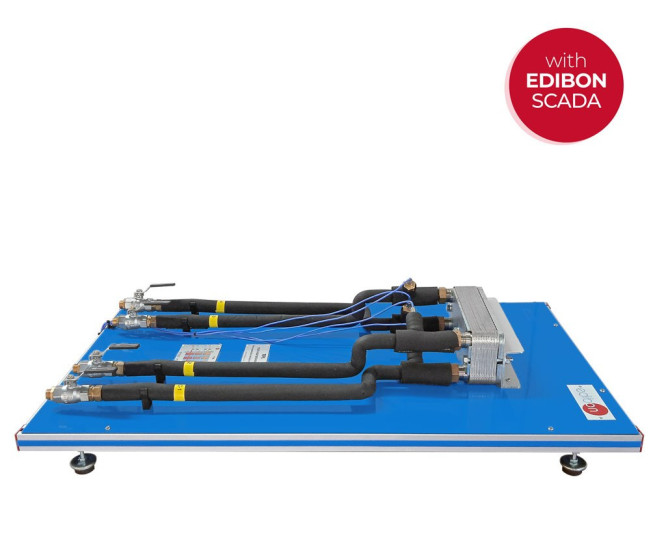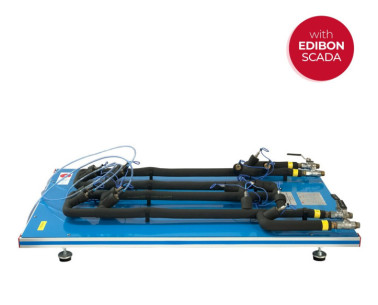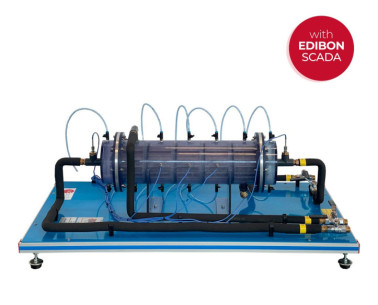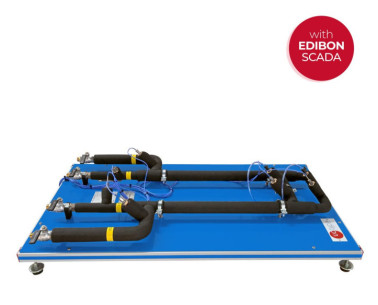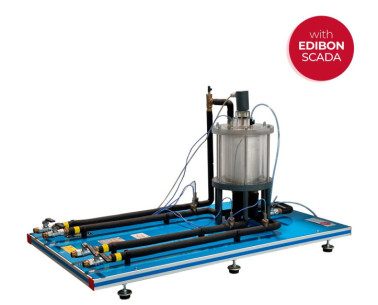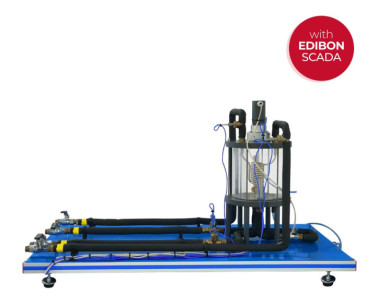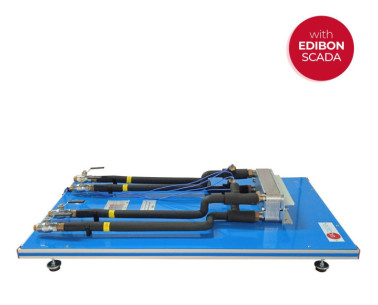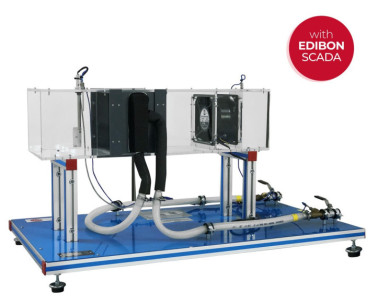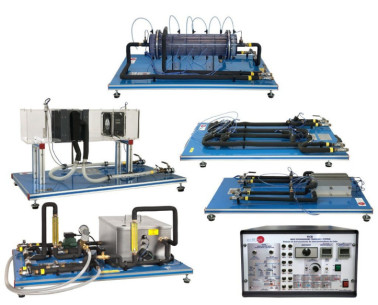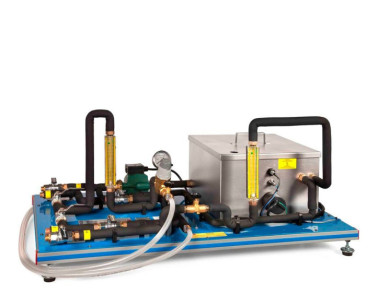TIPL Trocador de Calor de Placas para TICC
SISTEMAS INOVADORES
The Plate Heat Exchanger for TICC, "TIPL", designed by EDIBON, allows the study of heat transfer between hot and cold water flowing through alternate channels formed between parallel plates. This unit enables the analysis of how heat transfer varies under different conditions, such as changes in flow rate, temperature, and flow type (counter-current or parallel).
Expansões
LABORATÓRIOS
NOTÍCIAS RELACIONADAS
Descrição Geral
The Plate Heat Exchanger for TICC, "TIPL", designed by EDIBON, allows the study of heat transfer between hot and cold water flowing through alternate channels formed between parallel plates. This unit enables the analysis of how heat transfer varies under different conditions, such as changes in flow rate, temperature, and flow type (counter-current or parallel). With a plate arrangement that optimizes heat transfer, the Plate Heat Exchanger for TICC offers an effective tool for heat exchange analysis and experimentation.
The plate heat exchanger allows detailed study and analysis of heat transfer between two fluids flowing through alternate channels formed between parallel plates. This includes investigating the efficiency of the exchanger, studying the effectiveness of heat exchange, assessing the influence of flow rate on heat transfer, and comparing different flow configurations, such as counter-current and parallel flow. Additionally, this unit allows specific practices to be developed for determining the overall energy balance in the exchanger, calculating exchanger effectiveness using the NTU method, and studying the influence of Reynolds number on heat transfer.
The plate heat exchanger enables temperature measurement at various points within the exchanger, providing a detailed understanding of thermal distribution within the unit.
In summary, the Plate Heat Exchanger for TICC, "TIPL", offers students, professors, and researchers the opportunity to thoroughly understand and practice the fundamental principles of heat transfer and its application in industry, thanks to its parallel plate design.
To work with this unit, the Base and Service Unit, "TIUS", is required, which provides key functions such as heating water using a thermostatic bath, pumping hot water, regulating and measuring the flow rates of cold and hot water, measuring the inlet and outlet temperatures of cold and hot water, as well as measuring the pressure drop in the heat exchanger.
EXERCÍCIOS E PRÁTICAS GUIADAS
EXERCÍCIOS PRÁTICOS GUIADOS INCLUÍDOS NO MANUAL
- Study of the hysteresis of the flow sensor.
- Global energy balance in the heat exchanger and the study of losses.
- Exchanger effectiveness determination. NTU Method.
- Study of the heat transfer under counter-current and co-current flow conditions.
- Influence of the flow in heat transfer. Calculation of Reynolds number.
- Sensors calibration.
EXERCÍCIOS MAIS PRÁTICOS A SEREM FEITOS COM A UNIDADE
- Study of the hysteresis of the flow sensor.
Other possibilities to be done with this unit:
- Many students view results simultaneously. To view all results in real time in the classroom by means of a projector or an electronic whiteboard.
- Open Control, Multicontrol and Real Time Control. This unit allows intrinsically and/or extrinsically to change the span, gains, proportional, integral, derivative parameters, etc, in real time.
- The Computer Control System with SCADA and PID Control allow a real industrial simulation.
- This unit is totally safe as uses mechanical, electrical and electronic, and software safety devices.
- This unit can be used for doing applied research.
- This unit can be used for giving training courses to Industries even to other Technical Education Institutions.
- Control of the TICC unit process through the control interface box without the computer.
- Visualization of all the sensors values used in the TICC unit process.
- By using PLC-PI additional 19 more exercises can be done.
- Several other exercises can be done and designed by the user.
EQUIPAMENTOS SIMILARES DISPONÍVEIS
Trocador de Calor de Tubo e Carcaça para TICC
Trocador de Calor de Tubos Concêntricos para TICC
Trocador de Calor Encamisado para TICC
Trocador de Calor por Serpentina para TICC
Trocador de Calor de Tubos Concêntricos Estendidos para TICC
Trocador de Calor de Placas Estendido para TICC
Trocador de Calor de Fluxos Cruzados para TICC
EQUIPAMENTOS COMPLEMENTARES
Sistema de Treinamento de Trocadores de Calor, Controlado por Computador (PC)
Unidade Base e de Serviço (Comum para todos os Trocadores de Calor disponíveis tipo "TI")
Trocador de Calor de Tubos Concêntricos para TICC
Trocador de Calor de Tubos Concêntricos Estendidos para TICC
Trocador de Calor de Placas Estendido para TICC
Trocador de Calor de Tubo e Carcaça para TICC
Trocador de Calor Encamisado para TICC
Trocador de Calor por Serpentina para TICC
Trocador de Calor de Fluxos Turbulentos para TICC
Trocador de Calor de Fluxos Cruzados para TICC
Sistema de Treinamento em Trocador de Calor
Unidade Base e de Serviço (Comum para todos os Trocadores de Calor disponíveis tipo "TI..B")
Qualidade

Serviço pós-venda

 Preferências de cookies
Preferências de cookies

